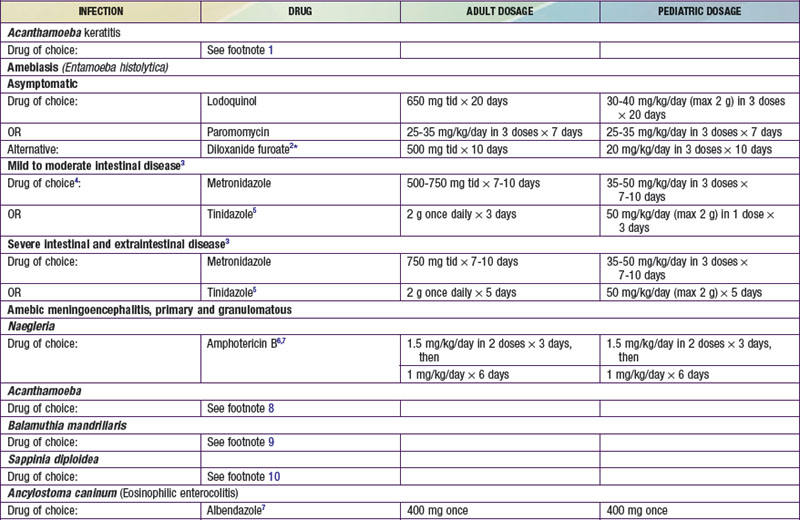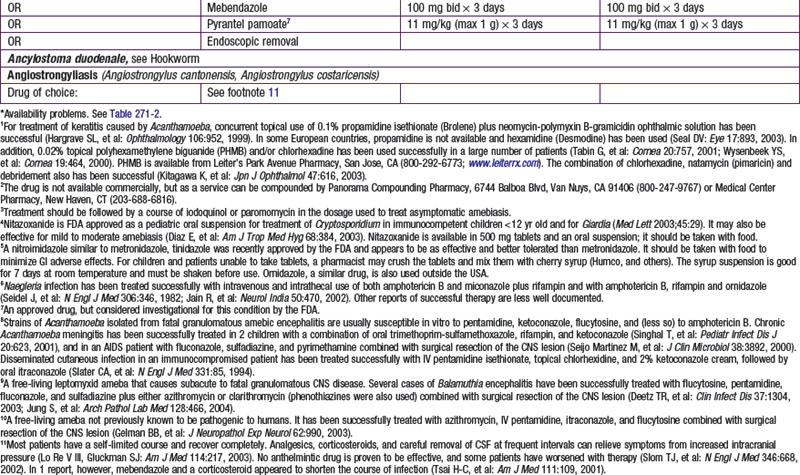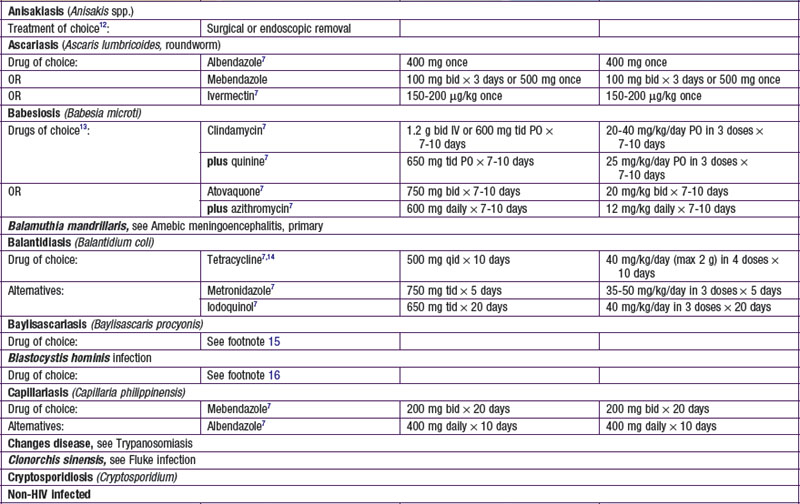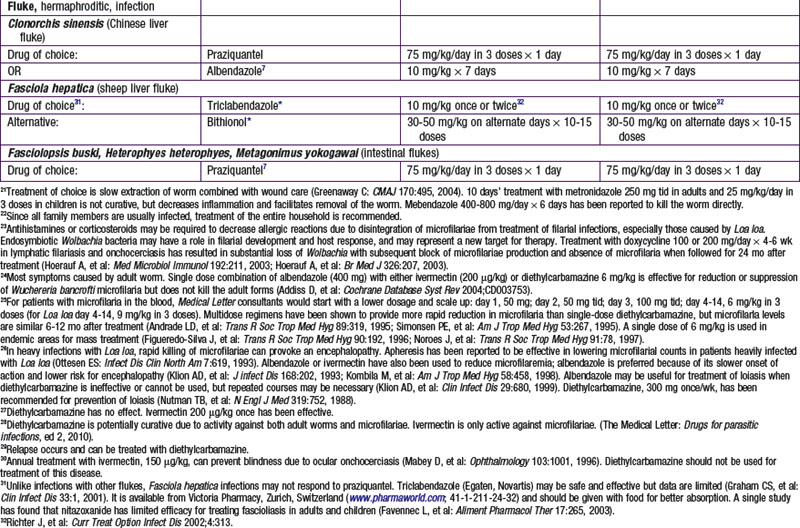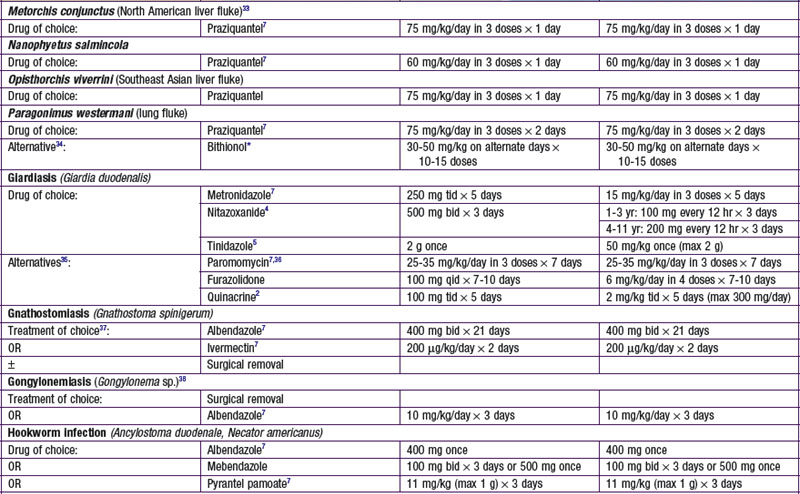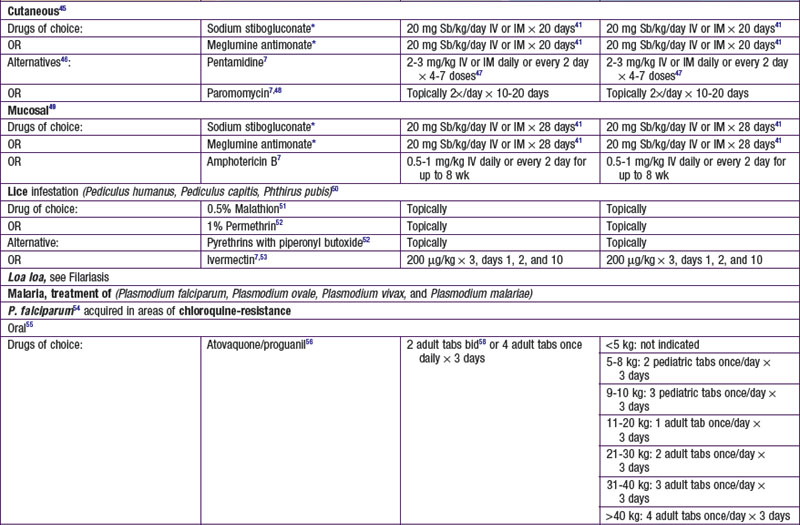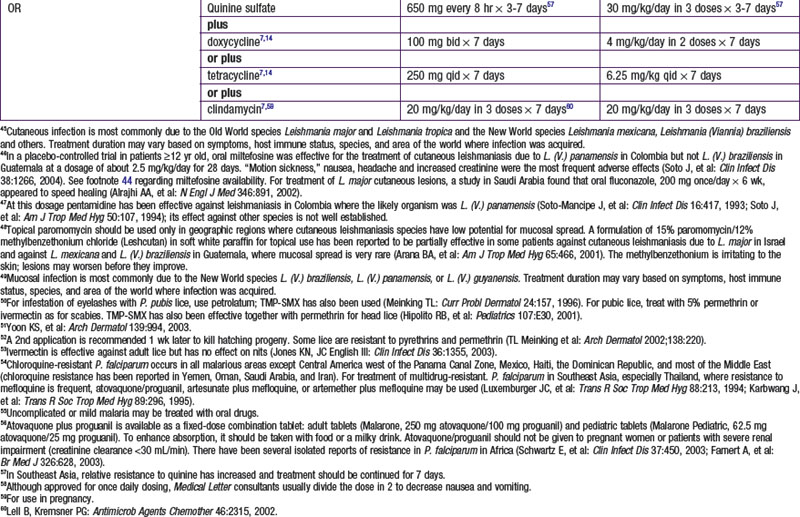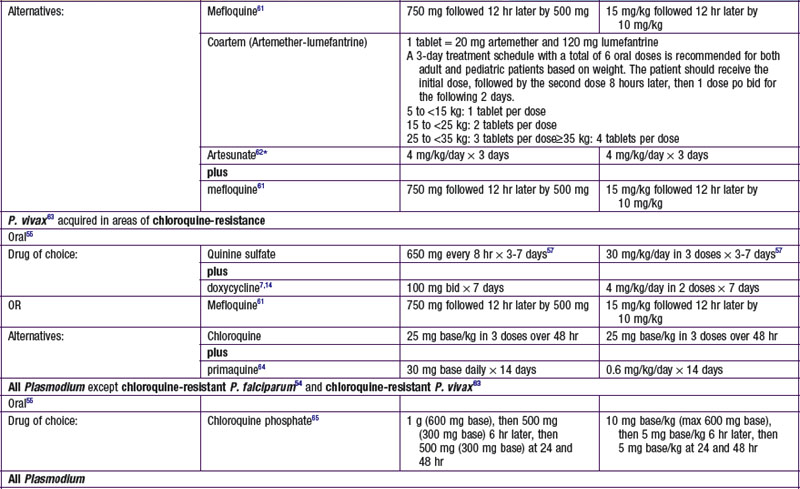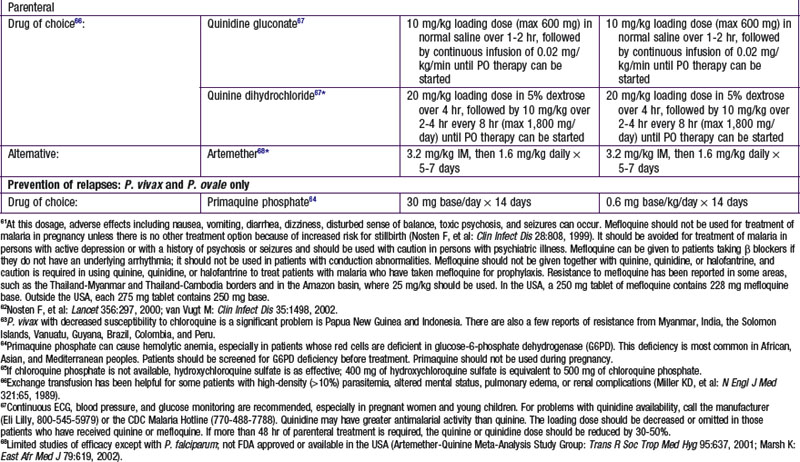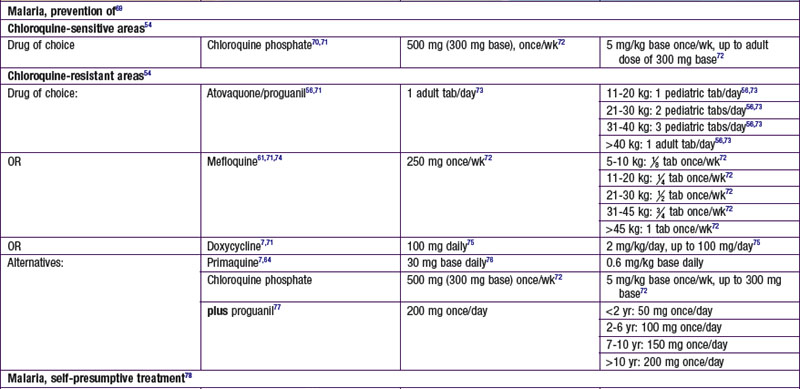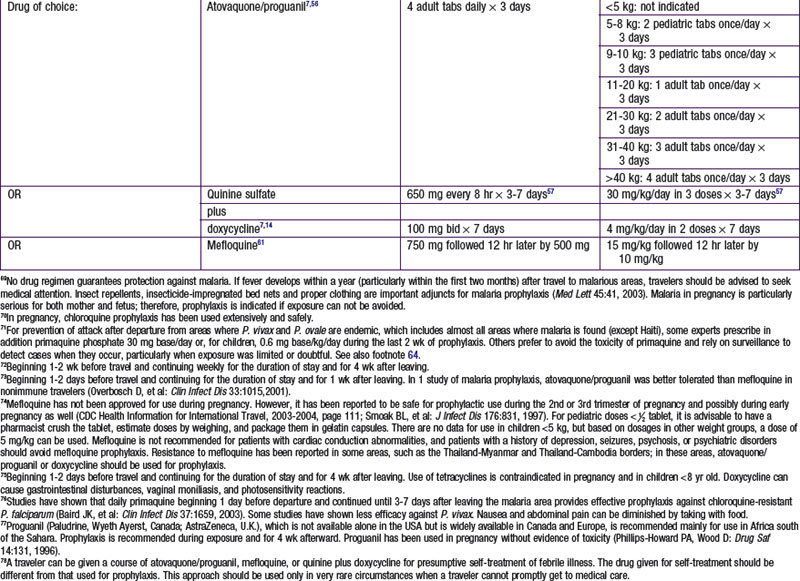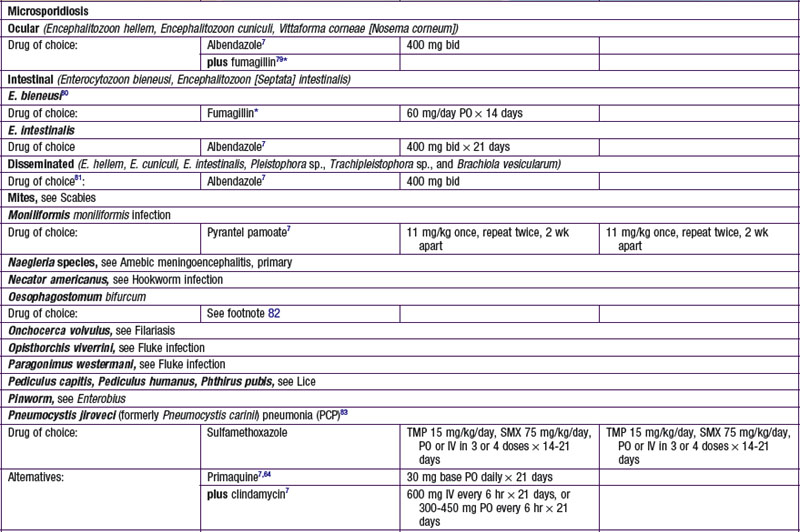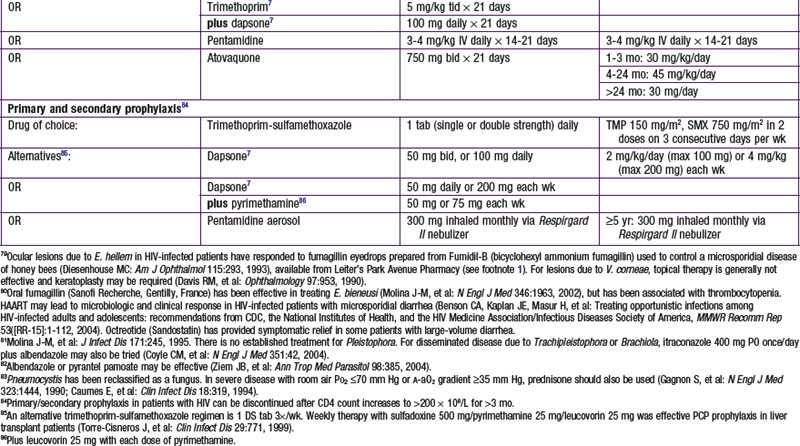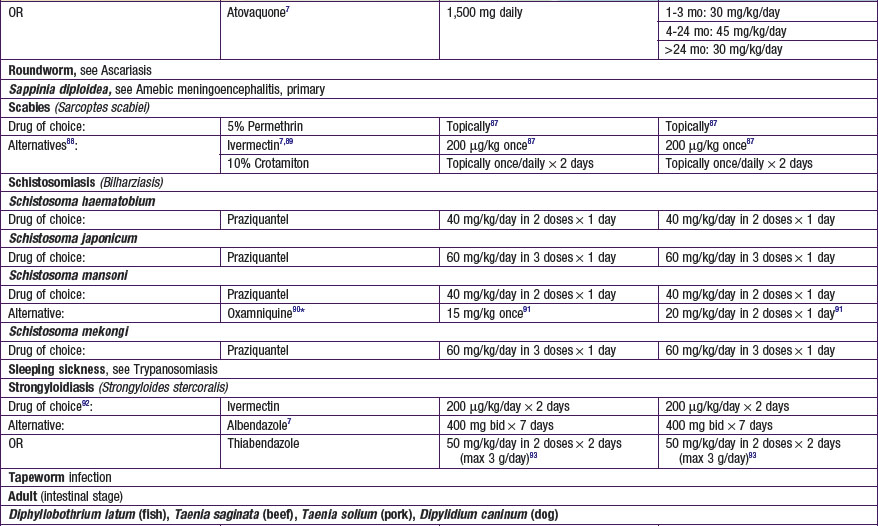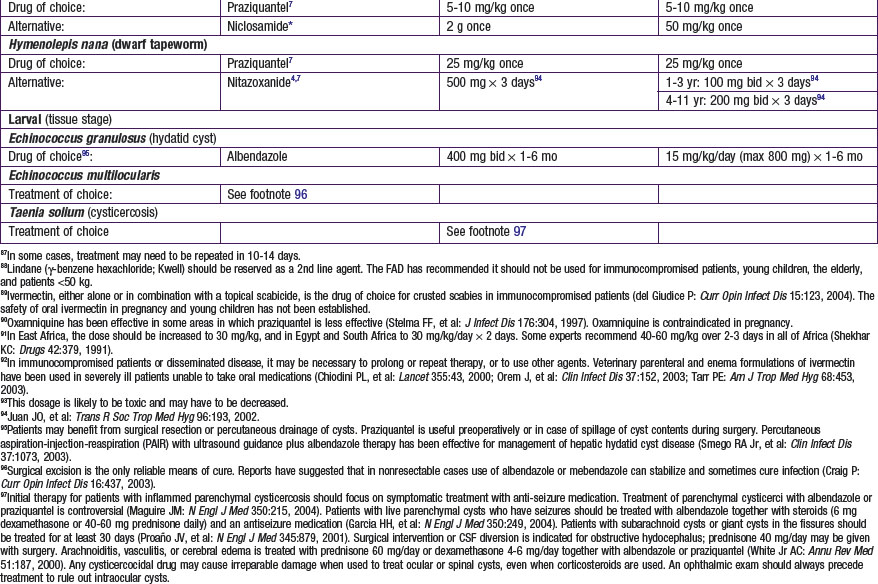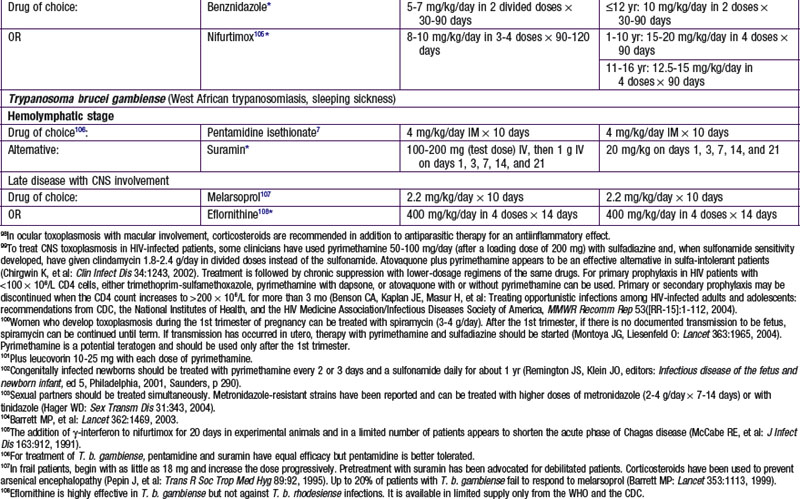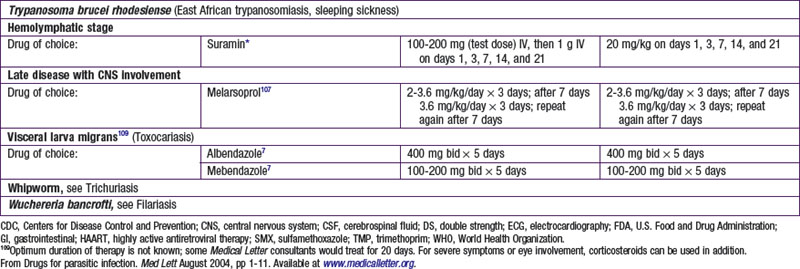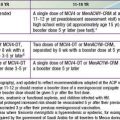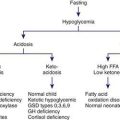Table 271-2 MANUFACTURERS OF DRUGS USED TO TREAT PARASITIC INFECTIONS
*Antiminth (Pfizer)—pyrantel pamoate
†Aralen (Sanofi)—chloroquine HCl and chloroquine phosphate
*artemether—Artenam (Arenco, Belgium)
*Artenam (Arenco, Belgium)—artemether
*artesunate—(Guilin No. 1 Factory, People’s Republic of China)
†Bactrim (Roche)—TMP/Sulfa
*benznidazole—Rochagan (Roche, Brazil)
*Biltricide (Bayer)—praziquantel
‡bithionol—Bitin (Tanabe, Japan)
‡Bitin (Tanabe, Japan)—bithionol
*Brolene (Aventis, Canada)—propamidine isethionate chloroquine HCl and chloroquine phosphate—Aralen (Sanofi), others
†Cleocin (Pfizer)—clindamycin
‡diethylcarbamazine citrate USP—Hetrazan
*diloxanide furoate—Furamide (Boots, U.K.)
‡eflornithine (difluoromethylornithine, DFMO)—Ornidyl (Aventis)
*Egaten (Novartis)—triclabendazole
†Flagyl (Searle)—metronidazole
†Fungizone (Apothecon)—amphotericin
*Furamide (Boots, U.K.)—diloxanide furoate
*furazolidone—Furozone (Roberts)
*Furozone (Roberts)—furazolidone
‡Germanin (Bayer, Germany)—suramin sodium
*Glucantime (Aventis, France)—meglumine antimoniate
‡Hetrazan—diethylcarbamazine citrate USP
*Impavido (Zentaris, Germany)—miltefosine
‡Lampit (Bayer, Germany)—nifurtimox
*Leshcutan (Teva, Israel)—topical paromomycin
*meglumine antimonate—Glucantime (Aventis, France)
‡melarsoprol—Mel-B (Specia)
‡Mel-B (Specia)—melarsoprol
*miltefosine—Impavido (Zentaris, Germany)
*niclosamide—Yomesan (Bayer, Germany)
‡nifurtimox—Lampit (Bayer, Germany)
†Nizoral (Janssen)—ketoconazole
*ornidazole—Tiberal (Roche, France)
‡Ornidyl (Aventis)—eflornithine (Difluoromethylornithine, DFMO)
*oxamniquine—Vansil (Pfizer)
*Paludrine (Wyeth Ayerst, Canada; AstraZeneca, U.K.)—proguanil
‡Pentostam (GlaxoSmithKline, U.K.)—sodium stibogluconate
*praziquantel—Biltricide (Bayer)
*proguanil—Paludrine (Wyeth Ayerst, Canada; AstraZeneca, U.K.)
*propamidine isethionate—Brolene (Aventis, Canada)
*pyrantel pamoate—Antiminth (Pfizer)
§quinidine gluconate (Eli Lilly)
†RID (Pfizer)—pyrethrins and piperonyl butoxide
†Rifadin (Aventis)—rifampin
*Rochagan (Roche, Brazil)—benznidazole
§Rovamycine (Aventis)—spiramycin
‡sodium stibogluconate—Pentostam (GlaxoSmithKline, U.K.)
§spiramycin—Rovamycine (Aventis)
‡suramin sodium—Germanin (Bayer, Germany)
*Tiberal (Roche, France)—ornidazole
*triclabendazole—Egaten (Novartis)
*Vansil (Pfizer)—oxamniquine
†Vibramycin (Pfizer)—doxycycline
†Yodoxin (Glenwood)—iodoquinol
*Yomesan (Bayer, Germany)—niclosamide
Modifed from Drugs for parasitic infection. Med Lett August 2004, p 12. Available at www.medicalletter.org.
![]() (see Tables 271-1 and 271-2 on the Nelson Textbook of Pediatrics website at www.expertconsult.com).
(see Tables 271-1 and 271-2 on the Nelson Textbook of Pediatrics website at www.expertconsult.com).
